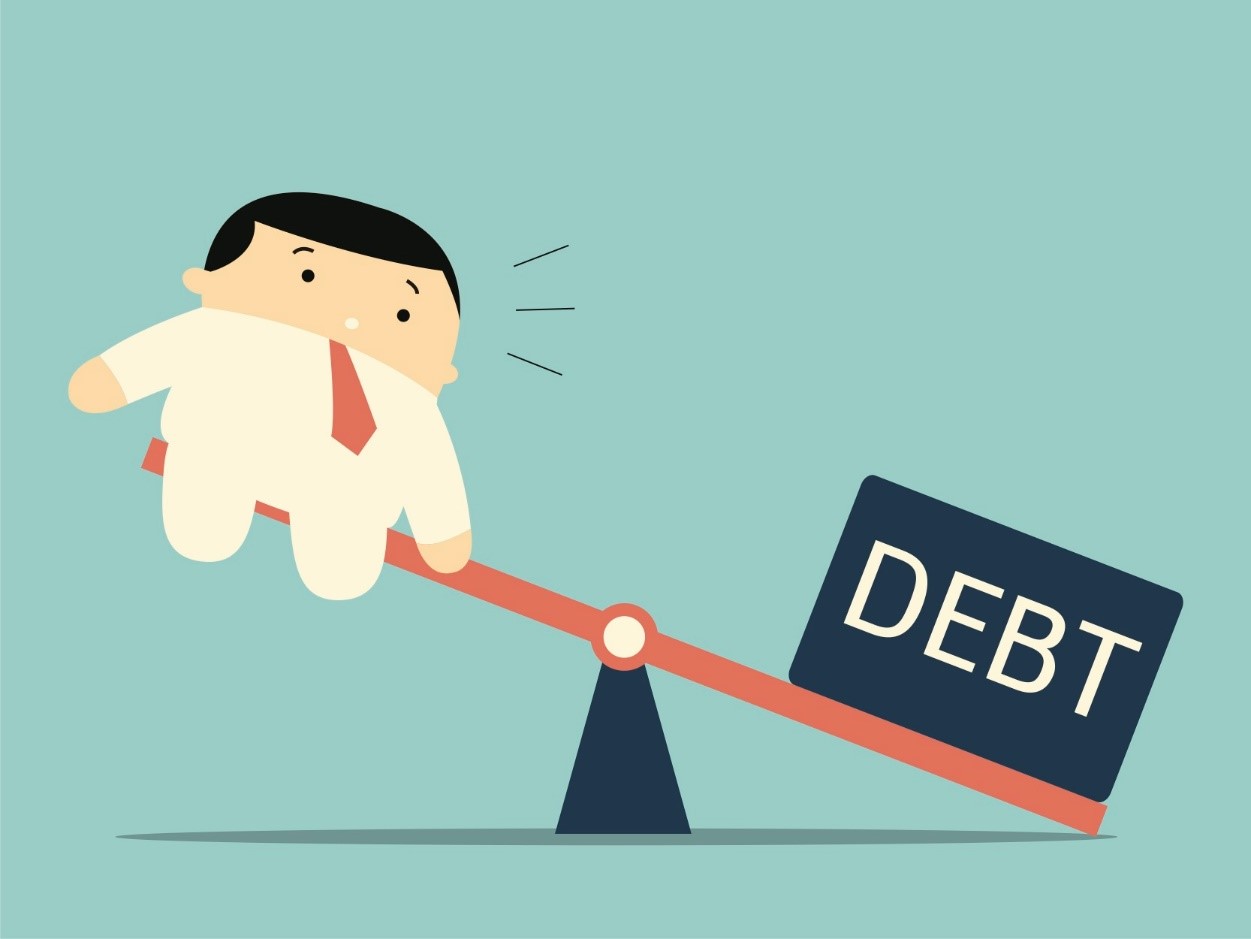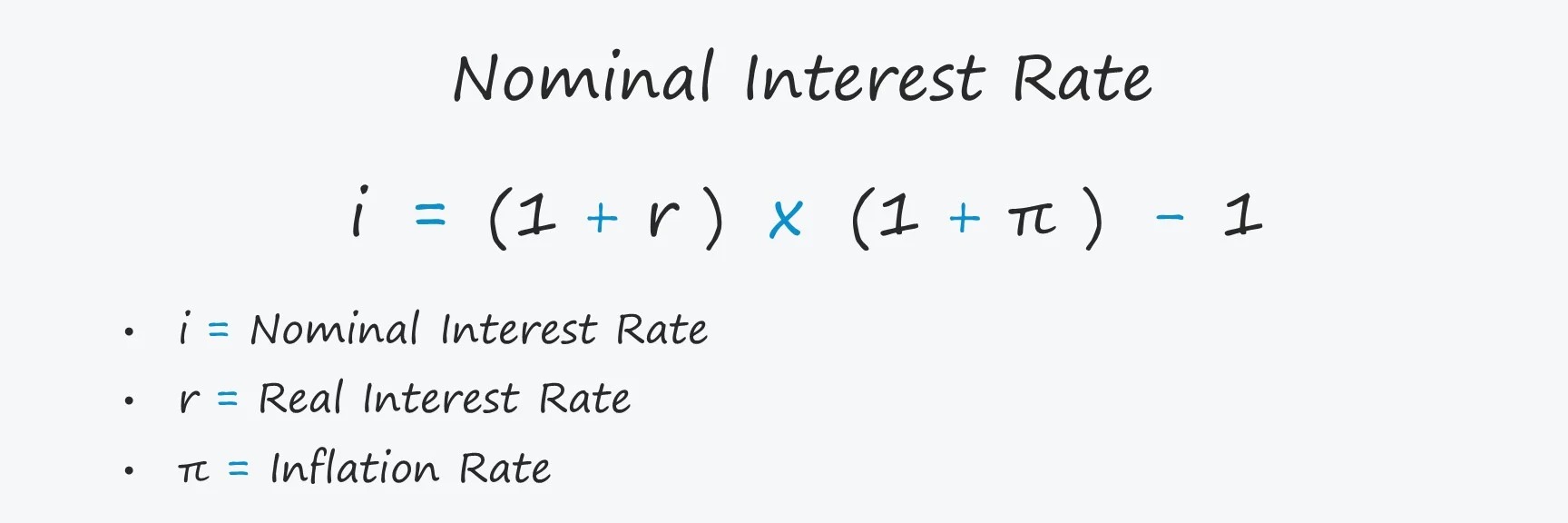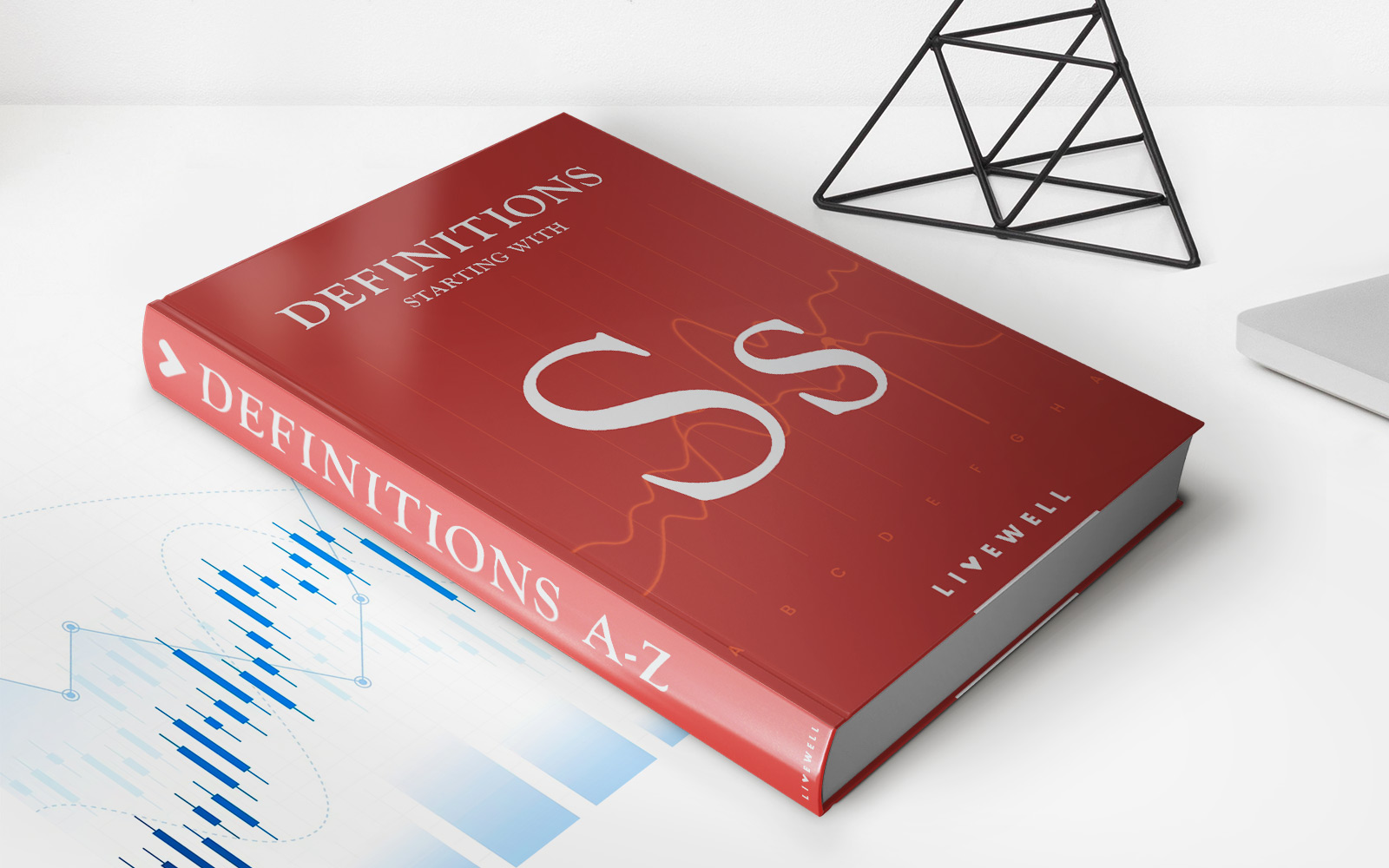

Finance
How Is Interest Calculated On A Personal Loan
Modified: February 21, 2024
Learn how interest on a personal loan is calculated and understand the financial aspects of borrowing with our comprehensive guide on finance.
(Many of the links in this article redirect to a specific reviewed product. Your purchase of these products through affiliate links helps to generate commission for LiveWell, at no extra cost. Learn more)
Table of Contents
- Introduction
- Understanding Personal Loan Interest Rates
- Simple Interest vs. Compound Interest
- Factors Affecting Personal Loan Interest Rates
- Fixed-Rate vs. Variable-Rate Personal Loans
- How to Calculate Interest on a Personal Loan
- Amortization and Loan Repayment
- Tips for Minimizing Personal Loan Interest
- Conclusion
Introduction
Personal loans are a popular financial product that can provide individuals with the funds they need for various purposes, such as consolidating debt, financing a home renovation, or covering unexpected expenses. However, when considering a personal loan, it’s essential to understand how interest is calculated and how it can impact your overall loan repayment.
Interest rates play a significant role in determining the cost of borrowing money. The interest you pay is essentially the cost of borrowing the funds from a lender, and it is typically expressed as an annual percentage rate (APR). It’s important to take the time to compare interest rates from different lenders to ensure you get the most favorable terms.
In this article, we will explore the intricacies of personal loan interest rates, including the difference between simple and compound interest, the factors that affect interest rates, and how to calculate the interest on a personal loan. Additionally, we will discuss the concept of amortization and provide some tips for minimizing interest costs.
By fully understanding how interest is calculated on a personal loan, you can make informed decisions regarding your borrowing needs, find the most favorable loan terms, and potentially save money in the long run.
Understanding Personal Loan Interest Rates
Personal loan interest rates are the percentage of the loan amount that lenders charge borrowers for borrowing money. These rates can vary based on various factors, including the borrower’s credit history, income, loan amount, and the lender’s policies.
When you borrow money through a personal loan, the interest is included in your monthly payments. Understanding how interest rates work is crucial to managing your loan effectively.
There are two primary types of interest rates: fixed and variable. A fixed interest rate remains the same throughout the loan term, while a variable interest rate can fluctuate over time. Each type has its pros and cons, so it’s important to choose the one that aligns with your financial goals.
Personal loans may also have different interest rate structures, such as simple interest or compound interest. Let’s take a closer look at each:
- Simple Interest: Simple interest is calculated based on the loan’s principal amount. It does not account for any interest accumulated over time. For example, if you borrow $10,000 at a 5% simple interest rate for one year, you would pay $500 in interest ($10,000 x 0.05 = $500).
- Compound Interest: Compound interest takes into account the accumulated interest over time. It is typically calculated on a monthly or annual basis. This means that as the interest accumulates, it is added to the principal amount, and subsequent interest is calculated on the new total. Compound interest can result in higher interest costs compared to simple interest.
When comparing loan offers, it’s crucial to consider the annual percentage rate (APR) in addition to the interest rate. The APR includes both the interest rate and any additional fees or charges associated with the loan, providing a more accurate representation of the total cost of borrowing.
Understanding personal loan interest rates and the different types can help you make informed decisions when choosing a loan. By comparing rates, considering the type of interest rate, and understanding the loan’s APR, you can find a loan that best suits your needs and financial situation.
Simple Interest vs. Compound Interest
When it comes to calculating interest on a personal loan, two common methods are often used: simple interest and compound interest. Understanding the difference between these two methods is important as it can significantly impact the total cost of borrowing.
Simple Interest: Simple interest is a straightforward method of calculating interest based on the original principal amount. The interest is calculated as a percentage of the principal and remains constant throughout the loan term. This means that the interest amount is the same for each payment period.
For example, if you borrow $10,000 with a simple interest rate of 5% for one year, your annual interest would be $500. Your monthly payments would then be $10,000 divided by 12 months, plus the $500 in interest divided by 12 months.
Compound Interest: Compound interest, on the other hand, is a more complex method that takes into account the accumulated interest over time. With compound interest, the interest is calculated based on the principal amount and the accumulated interest from previous periods.
For instance, if you borrow $10,000 with a compound interest rate of 5% annually, the interest for the first period would be $500, just like with simple interest. However, for the second period, the interest is calculated based on the principal of $10,000 plus the $500 in interest, resulting in a higher interest amount. This process continues for each period, resulting in a compounding effect where the interest grows over time.
Compound interest can substantially increase the total interest cost over the loan term compared to simple interest. It is vital to understand the compounding frequency (monthly, quarterly, annually) and the impact it has on the overall cost of borrowing.
When evaluating loan offers, it’s important to consider whether the interest is calculated using simple or compound interest. While compound interest may result in higher overall costs, it does not necessarily mean it should be avoided. Some borrowers may prefer the benefits of compound interest, such as potential higher returns on investments or the ability to pay off the loan early without additional penalties.
Ultimately, the choice between simple and compound interest depends on your financial goals, repayment capabilities, and personal preferences. Understanding the difference between the two can help you make an informed decision when comparing loan options and selecting the most suitable loan for your needs.
Factors Affecting Personal Loan Interest Rates
Personal loan interest rates are influenced by a variety of factors. Lenders analyze these factors to determine the risk level associated with lending to an individual and set the appropriate interest rate. Understanding these factors can help borrowers better comprehend the rates they are offered and potentially negotiate more favorable terms. Here are some key factors that affect personal loan interest rates:
- Credit History: Your credit history plays a crucial role in determining the interest rate for a personal loan. Lenders examine your credit score and credit report to assess your past credit behavior and your ability to repay the loan on time. A higher credit score demonstrates responsible borrowing and may lead to lower interest rates.
- Income and Debt-to-Income Ratio: Lenders consider your income level and debt-to-income ratio (DTI) to gauge your ability to meet monthly loan payments. A higher income and a lower DTI ratio indicate greater financial stability and may result in more favorable interest rates.
- Loan Amount and Term: The amount you borrow and the loan term can impact the interest rate. Generally, larger loan amounts or longer loan terms carry higher interest rates due to the increased risk for lenders.
- Employment and Stability: Lenders may assess your employment history and stability to evaluate your ability to repay the loan. A stable job and income source can reflect positively on your loan application and potentially lead to lower interest rates.
- Market Conditions: The overall economic and market conditions can influence interest rates. Lenders may adjust rates based on market trends and factors such as inflation rates, central bank policies, and demand for loans.
- Lender Policies and Competition: Each lending institution sets its own policies and pricing based on various factors. Interest rates can vary between lenders, so it’s essential to shop around and compare loan offers to find the most favorable terms.
It’s important to note that the impact of these factors on interest rates may vary among lenders. Some lenders may prioritize certain factors more than others, resulting in different rates. Additionally, lenders may offer different interest rate tiers based on the borrower’s creditworthiness and other criteria.
To secure the most competitive interest rates, take steps to improve your credit score, maintain a stable income, and shop around for loans to find the best terms available. Remember that each lender has its own criteria, so it’s worth exploring multiple options to find the loan that suits your needs and budget.
Fixed-Rate vs. Variable-Rate Personal Loans
When considering a personal loan, one important decision to make is whether to choose a fixed-rate or a variable-rate loan. Each type of loan has its own advantages and considerations. Understanding the differences between fixed and variable rates can help you determine which option is better suited to your needs and financial goals.
Fixed-Rate Personal Loans:
A fixed-rate personal loan is one in which the interest rate remains unchanged throughout the duration of the loan. This means your monthly payments will also stay the same over the repayment period, providing you with a predictable and stable payment plan.
The benefits of a fixed-rate loan include:
- Predictability: With a fixed-rate loan, you can accurately budget for your monthly payments, as they will not change over time. This can provide peace of mind and make it easier to plan your finances.
- Stability: Regardless of any fluctuations or movements in the market, your interest rate and payments will remain steady. This can be particularly advantageous during periods of economic uncertainty or rising interest rates.
- Long-Term Planning: Fixed-rate loans are ideal for long-term planning and those who prefer a consistent payment structure. This stability can be especially useful for larger loan amounts or extended repayment terms.
Variable-Rate Personal Loans:
A variable-rate personal loan, also known as an adjustable-rate loan, has an interest rate that can change over time. The rate is typically tied to a benchmark such as the prime rate or a specific index, and it may fluctuate periodically according to changes in the market or economic conditions.
The advantages of a variable-rate loan include:
- Lower Initial Rates: Variable-rate loans often have lower initial interest rates compared to fixed-rate loans. This can result in lower initial monthly payments, making them more affordable in the short term.
- Potential Cost Savings: If interest rates decrease, your monthly payments can also decrease, providing potential cost savings over the course of the loan.
- Flexibility: Variable-rate loans offer more flexibility, allowing borrowers to take advantage of changing market conditions and potentially benefit from lower interest rates.
It’s important to consider some considerations when choosing a variable-rate loan:
- Interest Rate Risk: Variable-rate loans come with the risk that interest rates may increase over time, leading to higher monthly payments. This risk should be carefully assessed and factored into your decision-making process.
- Budgeting Challenges: Fluctuating interest rates can make it challenging to budget for monthly payments, as they can change unpredictably. It’s crucial to consider your ability to absorb potential increases in interest rates and adjust your finances accordingly.
Ultimately, the choice between a fixed-rate and variable-rate personal loan depends on your risk tolerance, financial situation, and preferences. If you value stability and predictability, a fixed-rate loan may be the better choice. If you’re comfortable with potential rate fluctuations and want to take advantage of lower initial rates, a variable-rate loan could be a suitable option. Always take the time to compare loan offers from different lenders and consider seeking advice from a financial professional before making your final decision.
How to Calculate Interest on a Personal Loan
Calculating the interest on a personal loan is essential for understanding the total cost of borrowing and for budgeting your loan repayment. By determining the interest amount, you can accurately estimate your monthly payments and plan your financial obligations. Here’s a step-by-step guide on how to calculate interest on a personal loan:
- Identify the Key Loan Details: Gather the necessary information about your loan, including the loan amount, interest rate, and loan term (in months or years).
- Convert the Interest Rate: If the interest rate is given as an annual percentage rate (APR), divide it by the appropriate number (12 for monthly payments or 365 for daily compounding) to convert it to a monthly or daily rate.
- Calculate the Monthly Interest: Multiply the loan amount by the monthly interest rate to obtain the monthly interest. For example, if you have a loan amount of $10,000 and a monthly interest rate of 0.5%, the monthly interest would be $50 ($10,000 x 0.005 = $50).
- Calculate the Total Interest: Multiply the monthly interest by the number of months in the loan term to find the total interest payable over the loan’s duration. For instance, if you have a loan term of 36 months, the total interest would be $1,800 ($50 x 36 = $1,800).
- Add the Total Interest to the Loan Amount: Add the total interest to the original loan amount to find the total repayment amount. In this example, the total repayment amount would be $11,800 ($10,000 + $1,800 = $11,800).
Keep in mind that this calculation assumes a simple interest calculation method. If your loan uses compound interest, the calculation becomes more complex as you need to consider the compounding frequency and the impact on the overall interest cost.
When using online loan calculators or software, which are widely available, you can simply input the loan details, and they will automatically calculate the interest and provide you with an amortization schedule. These tools can be helpful in determining the monthly payment amounts and breaking down how much of each payment goes towards principal and interest.
Remember that the interest calculation is based on the loan terms and conditions at the beginning of the loan. If there are any changes to the interest rate or repayment schedule, the calculation may differ.
By understanding how to calculate the interest on a personal loan, you can make informed decisions about your borrowing needs, compare loan offers, and plan your repayment strategy. It is always recommended to consult with a financial advisor or use reliable online tools to ensure accurate calculations for your specific loan scenario.
Amortization and Loan Repayment
Amortization is a process that determines how your loan payments are allocated between the principal amount and the interest over the loan term. Understanding amortization is crucial for managing your loan repayment effectively and knowing how each payment impacts your outstanding balance. Here’s a breakdown of how amortization works and its implications for loan repayment:
Amortization Schedule:
An amortization schedule is a table that outlines the specific details of your loan repayment, including each payment’s breakdown between principal and interest. It typically includes information such as the payment number, payment amount, interest paid, principal paid, and remaining loan balance for each period.
Principal and Interest Allocation:
At the beginning of your loan term, a larger portion of your monthly payment goes towards interest, while a smaller portion is applied to the principal. As your loan progresses, the allocation shifts, and a larger portion of each payment is applied to the principal balance, reducing the outstanding debt over time.
Loan Repayment Strategies:
There are a few strategies you can consider when it comes to loan repayment:
- Pay More than the Minimum: Making additional payments or paying more than the minimum required amount can help reduce the principal balance faster, which can result in overall interest savings and a shorter loan term.
- Bi-Weekly Payments: Instead of making monthly payments, you can opt for bi-weekly payments, effectively making 26 half-payments in a year. This can result in an extra payment each year, accelerating the repayment process.
- Refinancing or Consolidating Loans: If you find yourself with high-interest loans, refinancing or consolidating your loans into a single loan with a lower interest rate can potentially save you money in interest payments and simplify your repayment process.
It’s important to review your loan agreement and discuss any repayment strategies with your lender to ensure they align with the terms of your loan and any potential prepayment penalties.
By understanding amortization and implementing effective repayment strategies, you can actively manage your loan repayment, save on interest costs, and potentially pay off your personal loan faster.
Tips for Minimizing Personal Loan Interest
When borrowing money through a personal loan, minimizing the interest you pay can save you a significant amount of money over time. Here are some valuable tips to help you reduce the interest costs associated with your personal loan:
- Improve Your Credit Score: A higher credit score can often lead to lower interest rates. Make sure to pay your bills on time, reduce your credit card balances, and avoid taking on excessive debt to improve your creditworthiness.
- Shop Around for the Best Rates: Different lenders offer varying interest rates and terms. Take the time to compare loan offers from multiple lenders to find the most competitive rates and terms that suit your needs.
- Consider Making Extra Payments: Paying more than the minimum required payment each month can help reduce the principal balance faster. This can result in less money accruing interest over time, ultimately decreasing the total interest paid and shortening the loan term.
- Make Payments on Time: Late payments not only incur additional fees but can also negatively impact your credit score, potentially leading to higher interest rates for future borrowing. Set up automatic payments or create reminders to ensure timely repayment.
- Refinance Your Loan: If market conditions have improved or your credit score has increased since taking out the loan, consider refinancing to secure a lower interest rate. Remember to compare the costs and benefits of refinancing, including any fees or charges.
- Avoid Unnecessary Fees: Some lenders may charge fees, such as origination fees or prepayment penalties. Read the loan terms carefully and consider lenders that offer favorable fee structures to minimize the impact on your overall interest costs.
- Prioritize Extra Income Towards Loan Payment: If you receive a bonus at work or have additional sources of income, consider allocating those extra funds towards your loan repayment. By making larger payments, you can pay down the principal faster, reducing the overall interest paid.
- Keep Loan Terms Shorter: While longer loan terms may offer lower monthly payments, they typically result in higher overall interest costs. If you can afford it, opt for a shorter loan term to reduce the interest paid over time.
Implementing these tips can help you save money and reduce the impact of interest on your personal loan. Remember to assess your financial situation, consider your long-term goals, and choose repayment strategies that align with your needs and budget.
Conclusion
Understanding how interest is calculated on a personal loan is crucial for borrowers looking to make informed financial decisions. By grasping the concepts of interest rates, simple versus compound interest, and the factors that affect loan interest rates, borrowers can secure the most favorable terms and save money over time.
Choosing between fixed-rate and variable-rate loans requires careful consideration of your risk tolerance and financial goals. Fixed-rate loans provide stability and predictability, while variable-rate loans offer the possibility of lower initial rates. Evaluating the pros and cons of each option can help you make the right choice for your circumstances.
Calculating loan interest allows borrowers to accurately budget for payments and understand the overall cost of borrowing. Utilizing loan calculators or consulting with financial professionals can streamline this process and provide clarity on repayment obligations.
Managing your loan repayment effectively involves understanding amortization, exploring repayment strategies, and considering refinancing or consolidating options. By implementing these techniques and minimizing unnecessary fees, you can optimize your loan repayment, reduce interest costs, and potentially pay off your loan sooner.
In conclusion, taking the time to educate yourself about personal loan interest rates, calculations, and repayment strategies is crucial for making well-informed financial decisions. By applying the tips outlined in this article and approaching your personal loan with careful consideration, you can minimize interest costs, save money, and achieve your financial goals faster.














